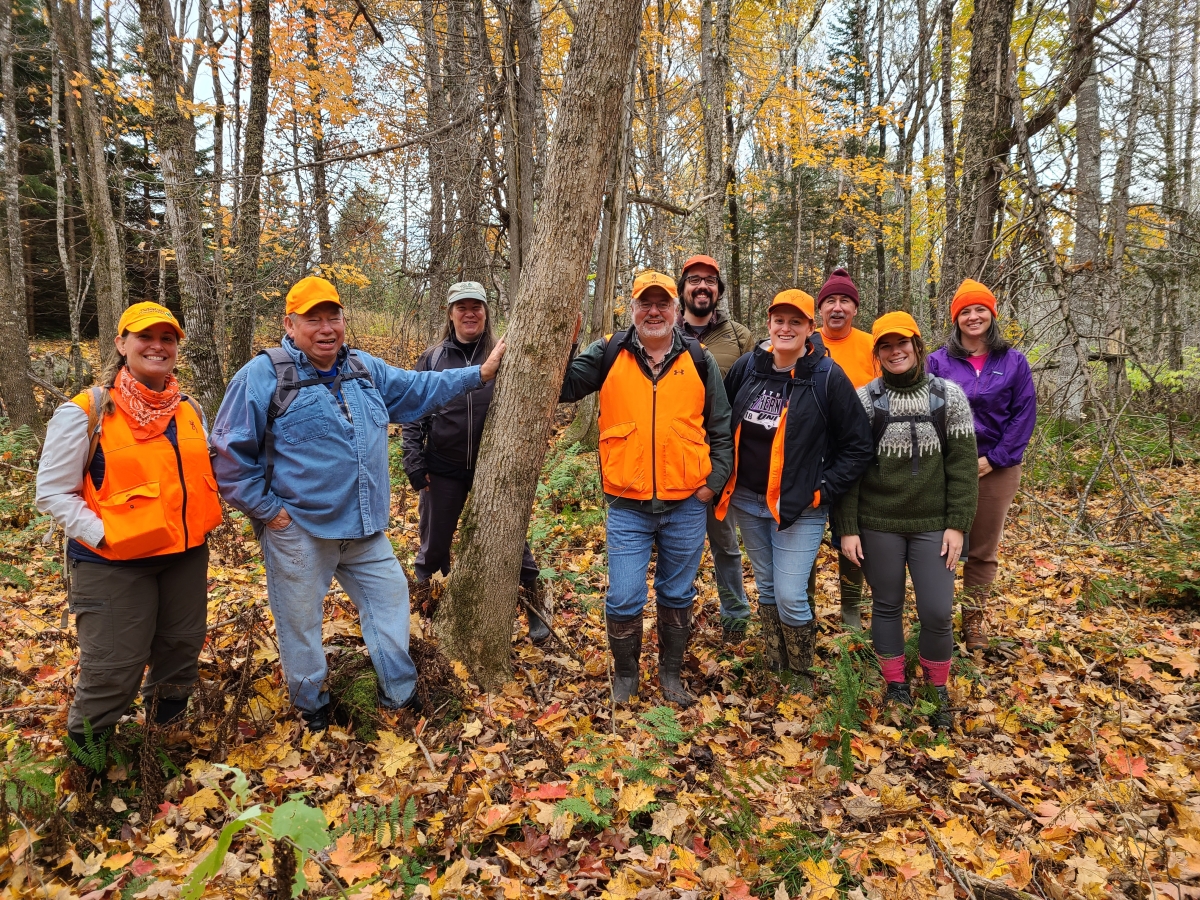You are here
Diversifying Partnerships in the Face of Forest Threats: New Research on EAB Management
By Emily Johnson
As climate change challenges the resilience of our forests, the presence of nonindigenous insects and pathogens will continue to threaten the existence of certain trees and the lifeways they support. Thanks in part to a USDA NIFA Critical Research and Extension Program grant, Harvard Forest researcher Dave Orwig partnered with experts throughout the northeast, including Harvard Forest Research Affiliate Tony D’Amato (University of Vermont) to research considerations of species preservation, with a particular focus on response to the emerald ash borer (EAB).
Published in the Journal of Forestry, three new papers describe a novel framework for nonindigenous insects and pathogens (NIIP) adaptation, including unique case studies with broadened preservation values relative to EAB and new insight into how foresters and loggers approach decision-making on stands threatened by this invasive pest.
An expanded approach to defining preservation values
The first of these research articles1 introduces a broadened concept of “preservation values” that encompasses ethical responsibility, cultural integrity, genetic conservation, and ecological function. “The more preservation values a strategy seeks to protect, the more likely it is to attract diverse partners interested in collaborating, which can increase support, resources, and opportunities,” write the authors1.

Building relationships is integral to this approach, as explained in the second paper2. Two case studies build from coauthor experiences to examine similarities and differences between preservation values and approaches for ash with the Akwesasne Task Force on the Environment (a group working for the Saint Regis Mohawk Tribe), the Maine Indian Basketmakers Alliance & Brown Ash Task Force (groups comprised and led by Tribal basketmakers, ash harvesters, and natural resource staff from the Wabanaki confederacy), and partnerships across state/federal agencies in Vermont and New Hampshire.
Decades before the emerald ash borer threatened the existence of ash, Tribal alliances in the Dawnland, or present-day Maine, have fostered the preservation of these trees, which are closely linked to cultural practices and lifeways, particularly in relation with brown ash. For decades, the Akwesasne Task Force on the Environment (ATFE) has led brown ash restoration efforts, documented propagation procedures, and, more recently, developed a comprehensive preparedness and response plan to EAB.

Similarly, the Maine Indian Basketmakers Alliance & Brown Ash Task Force (BATF) has expanded upon decades of brown ash preservation efforts to include federal subject matter experts and ensure Tribal perspectives are incorporated into Maine’s state response. Importantly, newly developed ash inventory protocols based on ATFE and BATF preservation values have led to trainings that are offered to Tribal and non-Tribal foresters alike. Foresters are uniquely poised to incorporate this new information about preservation values into management.
The role of foresters and loggers
In a concurrent study3, researchers at UMass Amherst (Marla Markowski-Lindsay and Paul Catanzaro) partnered with Harvard Forest researchers Dave Orwig, Jonathan Thompson, and Danelle LaFlower to better understand the role of foresters and loggers in response to EAB in Massachusetts and Vermont, with particular attention paid to the “secondary disturbance” caused by preemptive harvesting.
As the research team describes it, “Combined, the decisions foresters and loggers make about forest management influence thousands of acres a year in regions such as New England in the United States. To understand the total impact of EAB on forested landscapes, we must not only understand the primary ecological disturbance of EAB but also the secondary human disturbance resulting from the harvesting decisions of foresters and loggers to this invasive insect.3”
Results from this study found that one-third of respondents – which include both foresters and loggers – increased timber sales on ash properties due to the potential for future ecological impacts from EAB. Nearly 60% said that EAB changed their management activity on stands with ash. “It’s a lot of preemptive harvesting,” states Harvard Forest Senior Ecologist and co-author Dave Orwig, “but it’s not to the broad extent that we expected, because harvests were focused on maintaining future options.”
Throughout the country, landowners, conservation organizations, and agencies rely on these key decision-makers when planning in the face of novel forest threats. The research team found that both loggers and foresters expressed interest in new recommendations of silvicultural approaches that ensure the forest’s ecological well-being, particularly as they relate to future harvests.
As our conservation and research worlds grapple with a long history of excluding Tribal partners from decision-making, foresters are uniquely poised to bridge this gap, as the case studies above illustrate. “The complementary nature of recognizing both the traditional ecological knowledge and the Western science-based knowledge associated with these tree species and EAB as counterparts that are equal in value will be essential in fully understanding and developing solutions.2”
_________________________
1 Anthony W D’Amato, David A Orwig, , Species Preservation in the Face of Novel Threats: Cultural, Ecological, and Operational Considerations for Preserving Tree Species in the Context of Non-Indigenous Insects and Pathogens, Journal of Forestry, 2023;, fvad024, https://doi.org/10.1093/jofore/fvad024
2 Anthony W D’Amato, David A Orwig, , Towards Tree Species Preservation: Protecting Ash Amidst the Emerald Ash Borer Invasion in the Northeast, Journal of Forestry, 2023;, fvad025, https://doi.org/10.1093/jofore/fvad025
3 Marla Markowski-Lindsay , Forester and Logger Response to Emerald Ash Borer in Massachusetts and Vermont: a Secondary Disturbance, Journal of Forestry, 2023;, fvad019, https://doi.org/10.1093/jofore/fvad019

